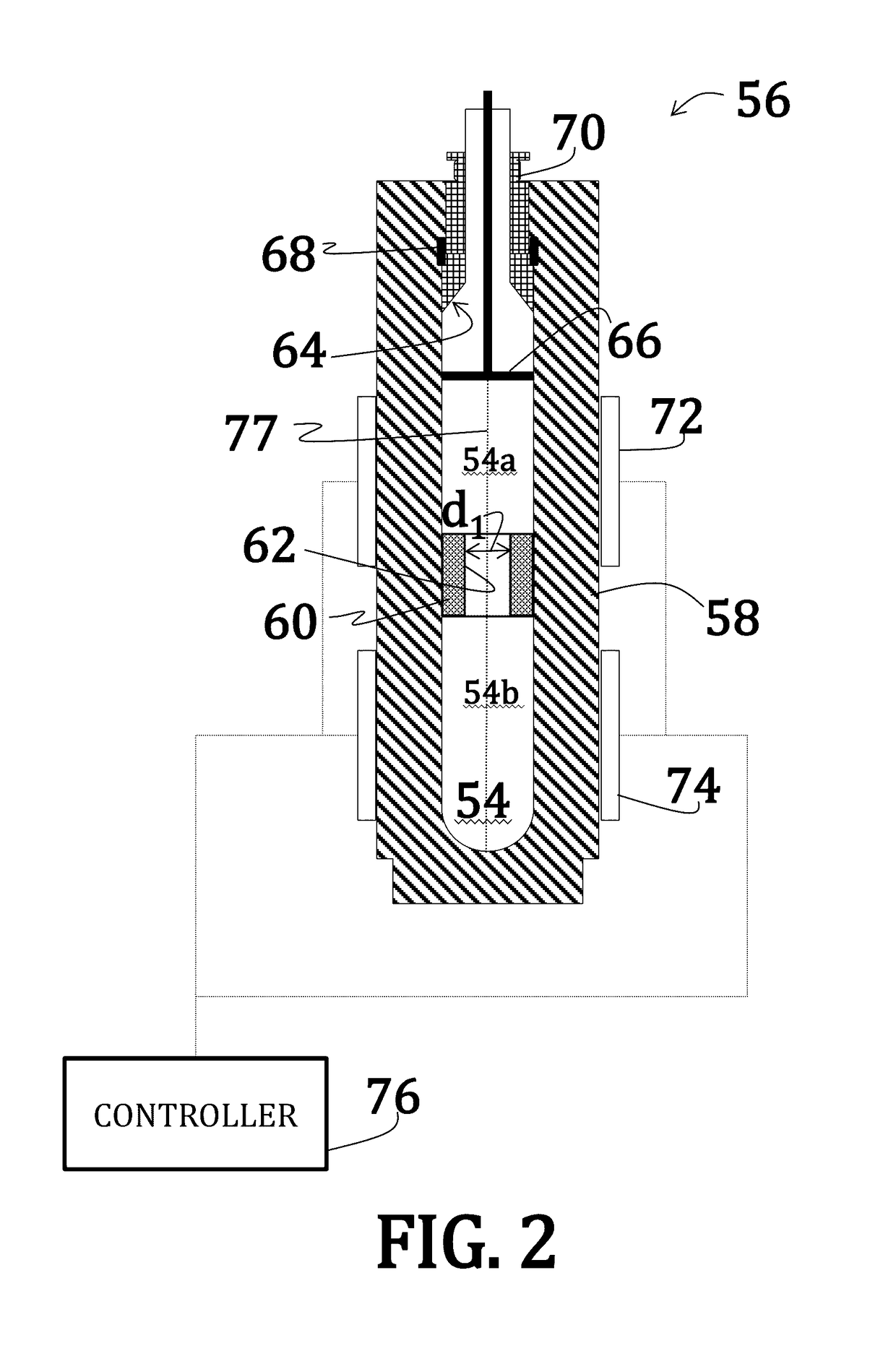Alkali uranium fluorophosphate-based crystals and methods of fabrication
a technology of uranium fluorophosphate and crystals, which is applied in the direction of uranium compounds, uranium oxides/hydroxides, crystal growth processes, etc., can solve the problems of borosilicate glass materials, synthesis of single crystals of actinide phosphates, and failure of single crystal synthesis of these new materials
- Summary
- Abstract
- Description
- Claims
- Application Information
AI Technical Summary
Benefits of technology
Problems solved by technology
Method used
Image
Examples
example 1
[0056]Uranium dioxide crystals were synthesized by placing a powdered or polycrystalline nutrient / feedstock of UO2 in a lower heating zone of a silver ampoule. A seed crystal of UO2 was suspended in the upper heating zone of the ampoule on a seed rack, similar to the embodiment illustrated in FIG. 6. A 6 M cesium fluoride mineralizer solution was added to fill 70% of the ampoule. A baffle comprising a precious metal was positioned between the lower heating zone and the upper heating zone of the ampoule. The ampoule was then welded shut and placed within a reaction chamber with water (enough to the 75% to 80% fill level) of an autoclave (similar to the embodiment illustrated in FIG. 5).
[0057]Band heaters on the autoclave were operated to maintain the lower heating zone at about 600° C. and the upper heating zone at about 550° C. A growth pressure of about 25,000 psi was maintained. Growth continued for 14 days.
[0058]New growth of UO2 crystalline material was deposited on the seed cry...
example 2
[0059]Uranium dioxide crystals were synthesized by placing a powdered or polycrystalline nutrient / feedstock of UO2 in a lower heating zone of a silver ampoule. A 9 M cesium fluoride mineralizer solution was added to fill 70% of the ampoule. A baffle comprising a precious metal was positioned between the lower heating zone and the upper heating zone of the ampoule. The ampoule was then welded shut and placed within a reaction chamber with water (enough to the 75% to 80% fill level) of an autoclave (similar to the embodiment illustrated in FIG. 5).
[0060]Band heaters on the autoclave were operated to maintain the lower heating zone at about 650° C. and the upper heating zone at about 600° C. A growth pressure of about 25,000 psi was maintained. Growth continued for 7 days.
[0061]Resultant and spontaneously nucleated UO2 crystals were approximately 0.25 mm in size.
example 3
[0062]Uranium dioxide crystals were synthesized using a CaF2 seed crystal. The orientation of the seed crystal may vary, but may generally be (100) and (111) and, preferably, (110). Additionally, a miscut of ranging from 2° to about 4° may be used where the nominal orientation is (100), (111), or (110). Synthesis occurred according to the method of Example 1; however, no thermal gradient was applied—that, is, the entire reaction was maintained at an isothermal temperature of 650° C. Moreover, as the reaction was isothermal, no baffle was used.
[0063]The CaF2 seed crystal was suspended slightly above the UO2 feedstock such that UO2 nutrients could dissolve into the feedstock prior precipitation onto the seed crystal.
PUM
| Property | Measurement | Unit |
|---|---|---|
| temperatures | aaaaa | aaaaa |
| temperature | aaaaa | aaaaa |
| temperature | aaaaa | aaaaa |
Abstract
Description
Claims
Application Information
 Login to View More
Login to View More - R&D
- Intellectual Property
- Life Sciences
- Materials
- Tech Scout
- Unparalleled Data Quality
- Higher Quality Content
- 60% Fewer Hallucinations
Browse by: Latest US Patents, China's latest patents, Technical Efficacy Thesaurus, Application Domain, Technology Topic, Popular Technical Reports.
© 2025 PatSnap. All rights reserved.Legal|Privacy policy|Modern Slavery Act Transparency Statement|Sitemap|About US| Contact US: help@patsnap.com



